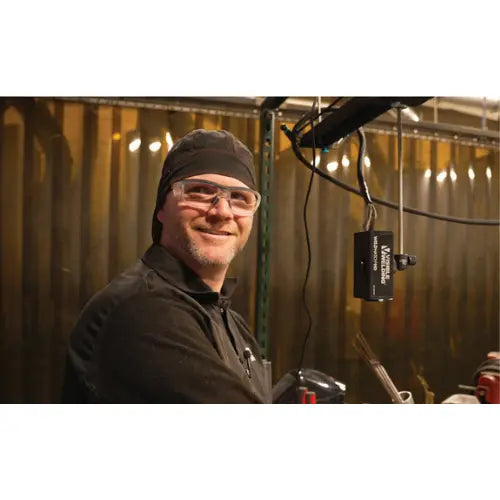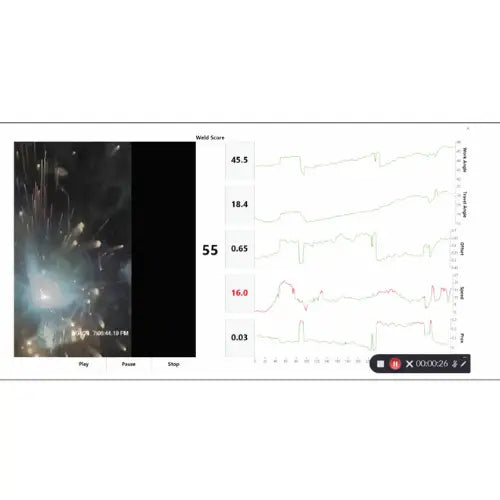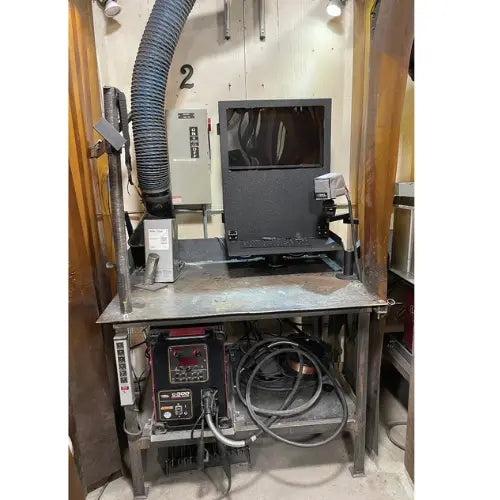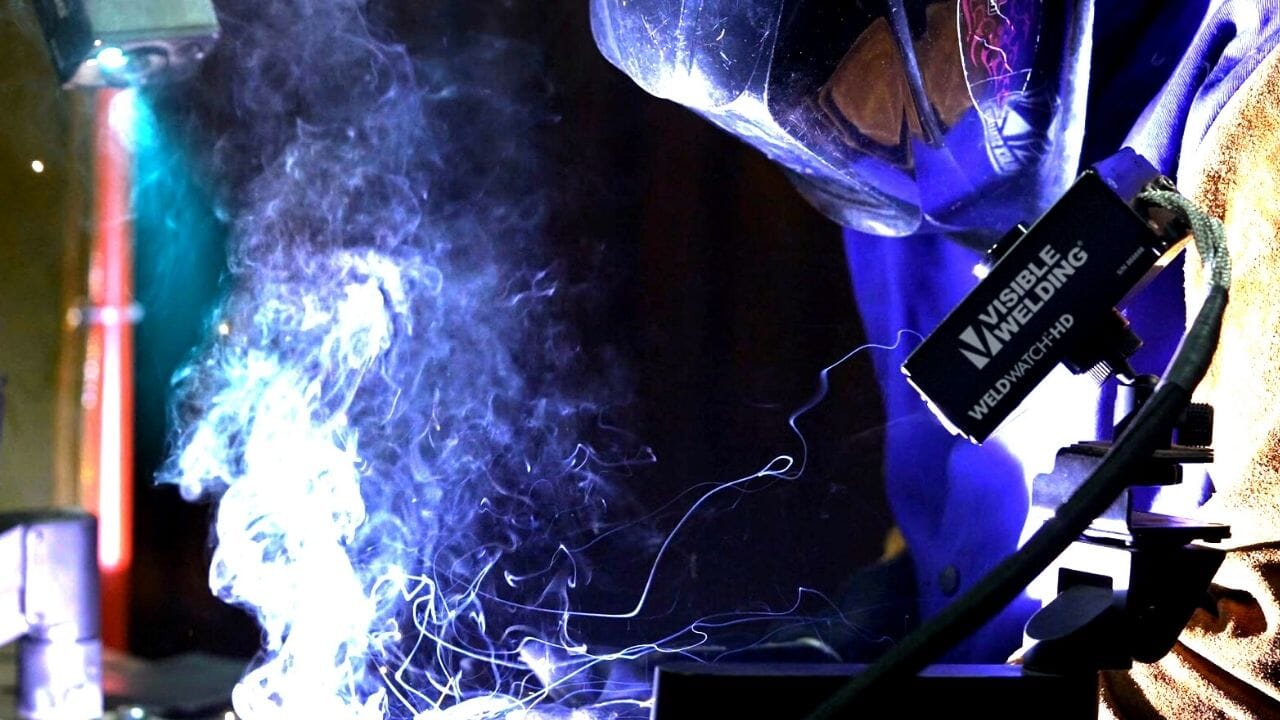
Scott Laslo, Skilled Trades Associate Professor & Program Cooridantor, CSCC
Welders Wanted
A New Use for Existing Technology
CSWT works by using the Lincoln Electric Power Wave® 300C advanced process welding machine, the Lincoln Electric REALWELD® trainer, and the InterTest Inc. Visible Welding® WeldWatch® HD EDU weld tutoring station (camera system). An experienced, skilled welder starts by performing a welding process on the Lincoln Electric equipment. A computer captures variables such as travel angle, travel speed, contact-to-work distance, wire feed
speed, amperage, and voltage during the welding process. These data variables build the tolerance thresholds that create the standard MWP to specifically and objectively score against.

A screenshot of a weld being recorded and scored on CSWT. The torch speed falls below and exceeds the MWP tolerance, as seen by the red portions of the speed line plot.
When welding students perform a live weld against the MWP, they simultaneously record their weld with the camera system. Real-time data shows if the student goes under or exceeds various tolerances of the MWP. The camera system produces an ultra-dynamic video recording that processes out the glare of the welding arc, resulting in a homogenous image of the torch tip, weld pool, and base metal. Upon finishing the weld, the welding student and instructor see an objective score out of 100, the weld’s matching data set, and a video in a single file. From there, the instructor can review the student’s file and welded piece to analyze what was done well and what can be improved.
A Different Style of Teaching
In traditional welding training, instructors show students a demonstration, tell them about that demonstration, and have them practice. Laslo learned and then taught welding this way for 25 years. Being an AWS Certified Welding Inspector and Certified Welding Educator as well as a certified welder under numerous AWS codes, he thought there might be another way to teach.
“I was never comfortable with being that final authority,” he said. “I did not feel that I should be the one who’s saying, ‘Student X has completed this and therefore can go out and be a true [welder].’ I knew I needed more tools. We want to teach how to onboard welders quicker without the learning curve.”
After Laslo researched technologies, earned grant awards, and worked with the CSCC IT department to develop the platform, the CSWT took center stage in the CSCC Center for Workforce Development building in June 2021. With two instructor stations and 13 student stations, it is the main feature of many of the 22 welding courses offered at the college. Students perform and record their welds, and instructors watch every station’s weld image and data, making learning and teaching more dynamic and easier for large groups.

A student booth at CSCC with CSWT ready for a student lab session.
“If I’m at my work station and I can see their screens, see their progress, I have a very quick opportunity to see if a student is struggling,” Laslo said. “I can be more intentional in who I need to help.”
Student Perspective
Olivia Ishmael, a welding major at CSCC, and her classmates used CSWT during a lab session in their introduction to GMAW course this past fall.
“I can see if I’m going too fast in one spot or not doing the correct hand motion in the other,” said Ishmael, who plans to go on to pipeline welding for construction after graduating. “I can look back to see what I need to fix and what I need to do correctly to get a good bead laid.”
Closing Thoughts
Repetition and practice of live welding still happen with CSWT, just in a different way. Students have the potential to gain a better understanding of their repetitions. Their scores and videos and instructors’ feedback let them know where they did well or went wrong. And lastly, students can benefit from learning an experienced welder’s technique under specific criteria, better preparing them for the workforce.
Previously published in the American Welding Society's Welding Journal - April 2022 Issue
References
1. American Welding Society. Shining a light on the welding workforce.
Retrieved February 18, 2022, from weldingworkforcedata.com.
2. Statista. Civilian labor force participation rate in the
United States from 1990 to 2021. Retrieved February 18, 2022,
from statista.com/statistics/191734/us-civilian-labor-forceparticipation-
rate-since-1990.

